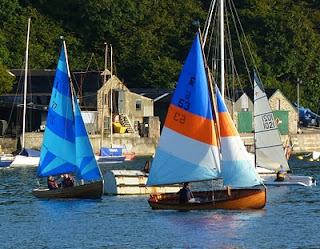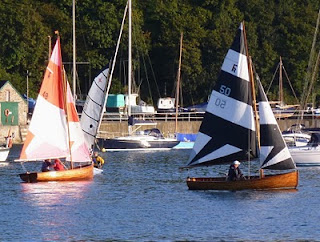Ok my pretties:
Today I decided to start gluing again after a long hiatus. My back is good enough now that I can bend into the boat now if Im really careful. We had a couple days where the temps were above freezing by a few degrees, so the garage temperature came up as well. With a well placed $12 heater from Lowes, I glued up the seat cleats for the bow, center, and stern seats.
This was another typical gluing disaster, messy and sticky. The bow went first. I decided to use two screws to get the side cleats into position, the ply-leverage method is a good one, but I didnt need the added stress of a cleat swimming out of position. Two 1 1/4" drywall screws and I knew nothing was moving. Youll notice that the vertical post has yet to be glued, Im waiting for everything to harden up so I can just get an accurate measurement.

Afterwards, I threw some plastic over it to make a heating tent thing. Very rudimentary, but quite effective.

Next up was the stern seat cleats. You may notice the bricks holding down the cleat along the floor. I did not use fasteners for this one, or its mate in the bow. Alternating the bricks supplied the weight and kept it from sliding around. Also, two screws per side cleat.

I did get some small gaps along some cleats, but when I pour glue all over them for the seat fitting, these will fill adequately. These are not necessarily structural, though they hold the seat which through its fillet along the side will be, but theres enough glue there. Also, no water gets in here anyway. Or put another way: If water gets this watertight compartment, Im really screwed anyway.

AND FINALLY
Ive started on working on something other than the hull. The daggerboard/centerboard and the rudder. Technically, its a daggerboard. Storer and others likes to use the word "foils" which I guess it correct, they are foil shaped, as in airfoil, but Ive never heard that term before, ever. Its always been "blades." So Im sticking with blades. Maybe its a New England thing.
I ripped up my 5/4x6" cedar planks to strips between 1-2". My bro-in-law is making a cherry countertop for his renovated kitchen. I was welcome to the scraps. So my daggerboard has cherry leading and trailing edges, with a middle spice-it-up stripe. The rudder, whose stock is not complete due to wood lackage, will most likely get two strips, for and aft, though I really would like a center stripe to match. This blank was also joined, as in, I used a joiner. Tight. I really went all out for this one!




































.jpg)
.jpg)
.jpg)

.jpg)




.jpg)











